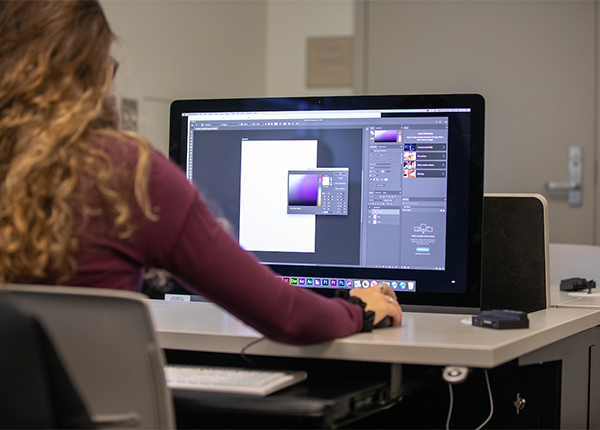The University is no longer taking applications to the BA in Human-Computer Interaction Design program. Current students enrolled in this program can view program details in the undergraduate catalog.
If you have an interest in designing user experiences and interfaces that extend beyond mobile phones and desktop computers, you should consider our unique program in Human-Computer Interaction Design (HCID).
The program features innovative coursework and offers real-world experiences that give you the digital design and computer programming background necessary to succeed in this integrated field.
About the Major

Human-Computer Interaction Design (HCID) is the science of creating measurably effective ways to interact with computational resources. Some modern examples include cloud services, voice activated assistants, semantically aware chatbots, and virtual/augmented reality systems. You will learn how to design user-friendly computer interfaces that are efficient, safe, aesthetically pleasing, and unique. This interdisciplinary program combines course work in computer science and design with an enriching liberal arts core, enabling you to foster a creative mindset for design-forward thinking.
UHart’s HCID graduates prepare for careers as:
- Applications system analysts
- User experience designers
- Computer architects
- Game developers
- Web developers
- Mobile app developers
- Software engineers
- Web application programmers
- Multimedia developers
Degree Requirements
You must complete a total of 40–44 credits that includes a combination of human-computer design, computer science, communication, and design courses.
Required Courses
Examples of core courses include:
- Interface Prototyping
- Interactive Data Visualization
- Communication in the Digital Age
- Fundamentals of Computing I
- Introduction to Internet Programming
- Foundations of Web Design and Development
For more information, and to see a complete list of degree requirements, visit the Course Catalog.
Minor Requirements
The HCID minor is a great option if you are choosing to major in another field (like Computer Science, Communication, Visual Communication Design, or Business) but would like to also learn skills in the creation of user-friendly computer applications.
You must complete 20–21 credits that includes core courses and an HCID elective.
- Fundamentals of Computing I
- Introduction to Internet Programming
- Introduction to User Interface Design
- Foundations of Web Design and Development
- Web Services
For more information, and to see a complete list of degree requirements, visit the Course Catalog.
Career Outlook
According to the U.S. Bureau of Labor Statistics, the median salary for all software developers was $105,590 in 2019, and the predicted job growth was much faster than average at 21% between 2018 and 2028.
Learning Outcomes

Bachelor of Arts in Human-Computer Interaction Design students will:
- Analyze a complex computing problem and to apply principles of computing and other relevant disciplines to identify solutions.
- Apply web design principles and contemporary methods.
- Design effective Internet-based communication interfaces.
- Communicate and function effectively in a variety of professional contexts and team-based roles.
Course Information
Alec Dergachev '24, Human-Computer Interaction DesignThe best part about this major is you are given the ability to look at nearly any website and know what went into making it and how to improve it to enhance the user experience.